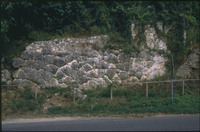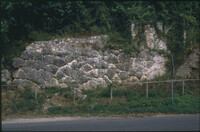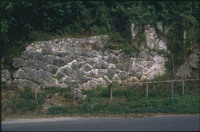| dc.description | An ancient and important city of the Volscians, which retains its ancient name and position, on a lofty hill near the sources of the little river Melpis (Melfa), and about 12 miles SE. of Sora. Virgil speaks of it as a great and powerful city (Atina potens, Aen. 7.630) long before the foundation of Rome, and Martial also terms it “prisca Atina” (10.92. 2.): the former poet seems to consider it a Latin city, but from its position it would appear certain that it was a Volscian one. It had, however, been wrested from that people by the Samnites when it first appears in history. In B.C. 313 it was (according to some annalists) taken by the Roman consul C. Junius Bubulcus (Liv. 9.28); but in B.C. 293 we again find it in the hands of the Samnites, and its territory was ravaged by the consuls, but no attack made on the town. (Id. 10.39.) We have no account of its final reduction by the Romans, but it appears to have been treated with severity, and reduced to the condition of a praefectura, in which it still continued even after its citizens had been admitted to the Roman franchise. But notwithstanding its inferior position, it was in the days of Cicero a flourishing and populous town, so that he draws a favourable contrast between its population and that of Tusculum, and says that it was not surpassed by any praefectura in Italy. (Cic. pro Planc. 8) It was the birthplace of his friend and client Cn. Plancius, and was included in the Terentine tribe. [1.311] (Ibid. 16.) At a subsequent period it became a municipal town, with the ordinary privileges and magistrates; but though it received a military colony under Nero, it did not obtain colonial rank. We learn, from numerous inscriptions, that it continued to be a considerable place under the Roman empire. (Lib. Colon. p. 230; Plin. Nat. 3.5. s. 9; Ptol. 3.1.62; Murat. Inscr. pp. 352, 1102, 1262; Orell. Inscr. 140, 1678, 2285, &c.)
Silius Italicus alludes to its cold and elevated situation (monte nivoso descendens Atina, 8.398), and the modern city of Atina is noted as one of the coldest places in the whole kingdom of Naples, which results not only from its own position on a lofty eminence, but from its being surrounded by high and bleak mountains, especially towards the south. Its ancient walls, built in a massive style of polygonal blocks, but well hewn and neatly fitted, comprised the whole summit of the hill, only a portion of which is occupied by the modern city; their extent and magnitude confirm the accounts of its importance in very early times. Of Roman date there are the remains of an aqueduct on a grand scale, substructions of a temple, and fragments of other buildings, besides numerous sepulchral monuments and inscriptions. (Romanelli, vol. 3. p. 361; Craven, Abruzzi, vol. i. pp. 61--65.) | en_US |



